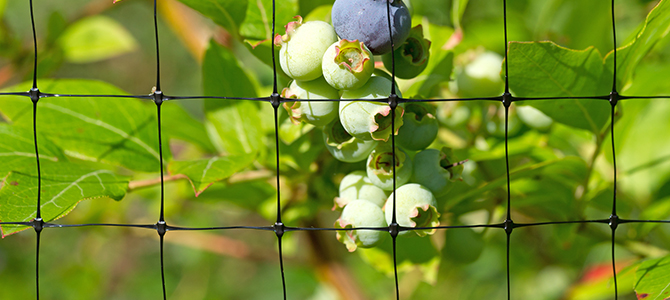Whether you’re growing fruit, vegetables or plants in your garden, the chances are that you’ve toiled long and hard to bring your seeds and plants to fruition. Your garden looks immaculate and you’re looking forward to what the vegetable patch will deliver to you this week.
For many gardeners this is the dream, and to have it ruined by birds would be an absolute travesty. Birds are a vital part of gardens and they have a number of important functions, but they can also be extremely destructive, especially in larger numbers. Therefore, as they’re planning their planting, many gardeners are also planning just how they can go about preventing their hard work being ruined.
Bird netting is the ideal way to allow your plants and flowers to blossom and grow whilst protecting them from the incoming threat. However, there are many tips for gardens which could ensure getting it right and getting the results you had hoped for.
#1. The Right Netting
There are a variety of types of deterrent which may be used. Whilst there is no real right or wrong type in terms of the thickness of the actual net or the gaps in between it, there are a few factors which can help to prolong its’ use. Finding a net with an added Sun Protection Factor and a UV filter might not seem essential but this protection from the sun could ensure that the harsh sun doesn’t cause damage to the net or cause it to weather.
#2. Fitting
As you’re fitting the netting, it’s essential that it covers the entire area you need it to. Firstly, you’ll need to build a foundation. Many people use a wooden box shape and attach their netting accordingly. There are many online videos with bird netting tips for gardeners which give instructions on fitting; however, the main aim as you’re doing so is to ensure that the netting is tightly adhered to the foundation and that there are no gaps through which a curious bird might make their way.
#3. Height
One common mistake is to pull the netting tightly over the foundations. This is always done with the best of intentions from gardeners who think they’re simply protecting their plants but it can become problematic as the plants begin to grow, especially if they have nowhere to grow to. Therefore, there should always be ample space left at the top for growth and plant development.
#4. Maintenance
Birds, especially hungry birds, are experts in finding the weakness of a net and will then exploit it for all they’re worth. Therefore, you should be checking the nets on a regular basis to assess for any damage or weakness and attend to any discoveries as a matter of urgency.
About the Author:
David is the leading experts of bird control solution in the UK and as such are best placed to provide bird netting tips for gardeners.

No comments:
Post a Comment